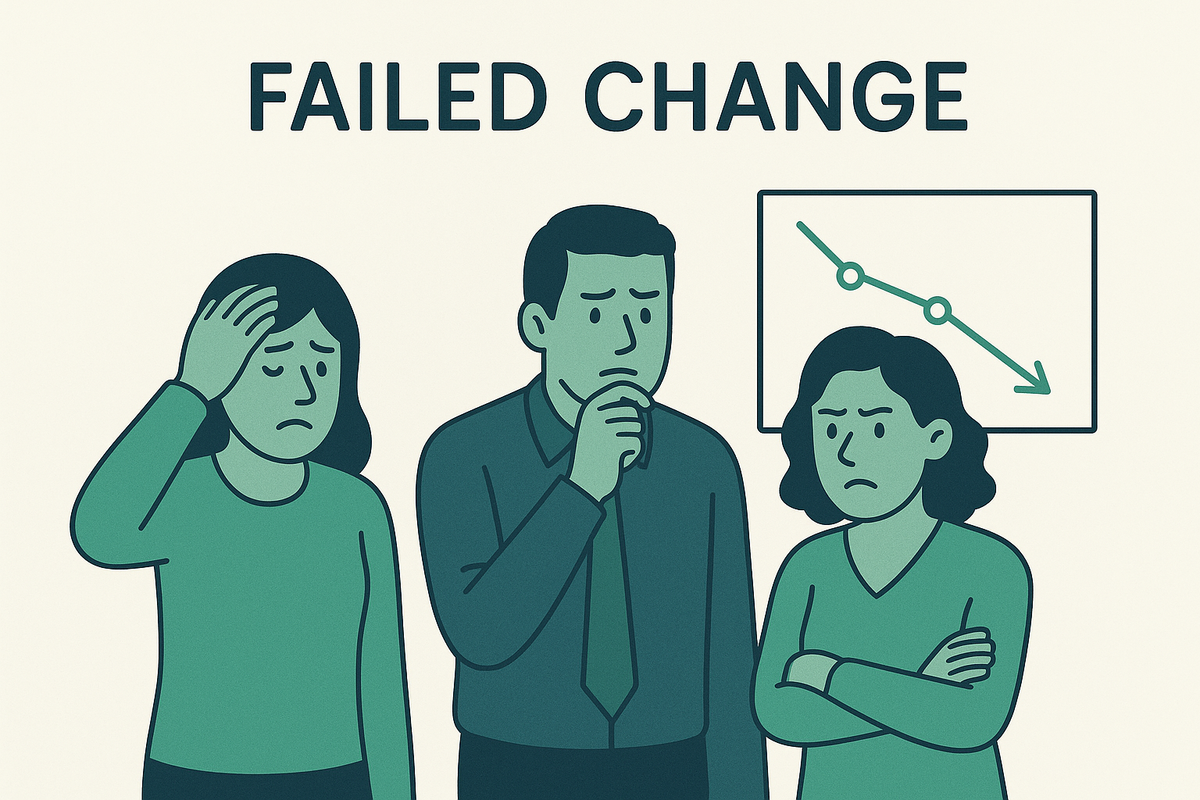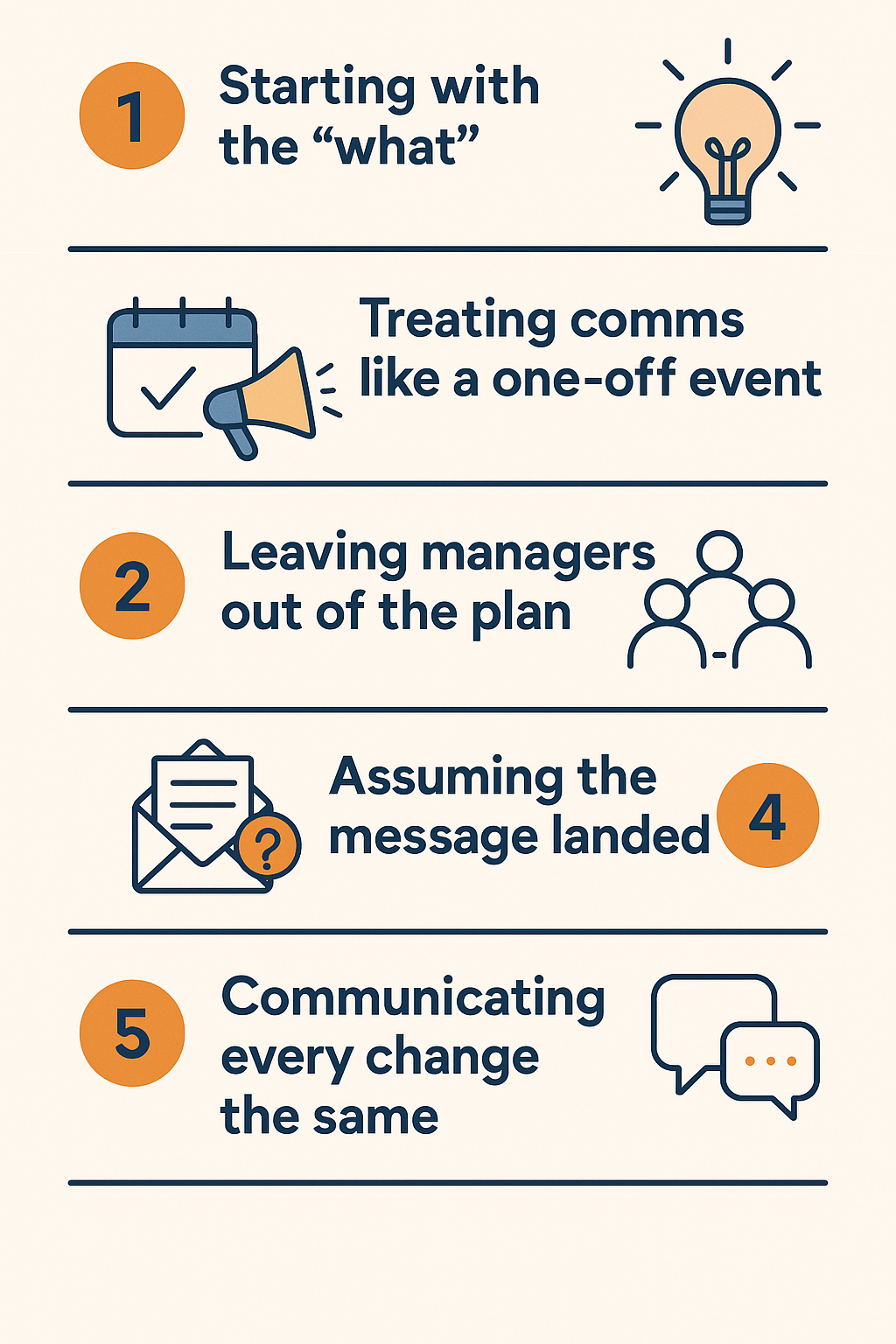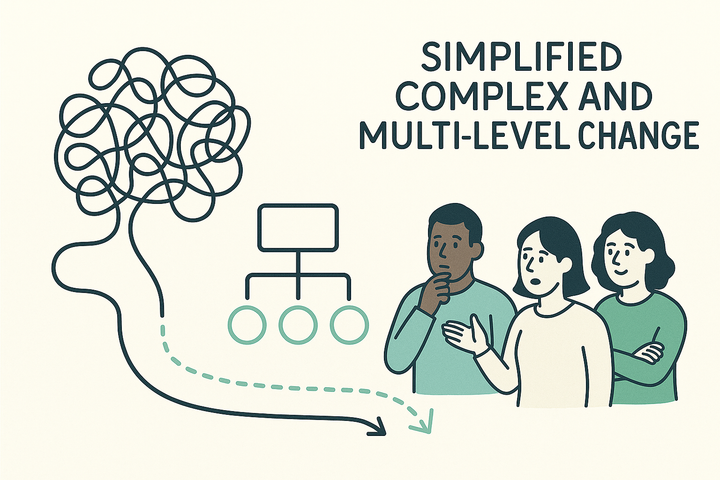5 Big Mistakes in Change Communications (And What to Do Instead)
Change communication is more than messaging. It’s movement. These are the five mistakes that break momentum — and what to do instead.

Let’s start with this: communication doesn’t make change happen. But poor communication can stop it dead.
You can have a brilliant strategy. The right programme design. All the funding, tools and timelines in place.
But if your message doesn’t make sense…
If people don’t believe it…
If they can’t see where they fit…
Then your change won’t move.
Over the past decade, I’ve seen hundreds of change efforts stall — not because the change was wrong, but because the comms didn’t do what it needed to.
So here they are: the five biggest mistakes I see organisations make — and what to do instead.
Mistake 1: Starting with the what, not the why
Too many comms strategies launch with the announcement:
“Here’s what’s changing. Here’s what we’re doing.”
But without context, people can’t make sense of it.
And when people can’t make sense of something, they fill in the gaps — with fear, cynicism or resistance.
You have to start earlier.
Instead: Begin with sensemaking.
Why now? Why this? Why us? What’s shifting in the system, the sector, the organisation?
Show the pattern before you show the plan. Frame the why before you push the what.
More here: Sensemaking in Change Communication
Mistake 2: Treating comms like a one-off event
You’ve written the slide deck. The email’s gone out. You’ve launched the hub. Done, right?
Wrong.
Change is not a broadcast. It’s a process.
And people move through it in waves — not all at once.
If you communicate once, you only reach the people who were ready in that moment. Everyone else? They’re still catching up, questioning, or quietly resisting.
Instead: Plan your comms like a drumbeat, not a drumroll.
- Return to the message often
- Adjust as you go
- Vary your formats
- Reinforce through different voices (not just the CEO)
Change needs narrative. Narrative needs rhythm.
See also: The Art of the Backstitch

Mistake 3: Leaving managers out of the plan
You’ve briefed the execs. You’ve posted the update. But you forgot the people who matter most: your managers.
Line managers are the real front line of change.
They’re the ones your people turn to when things get real:
“What does this mean for me?”
“Are our jobs safe?”
“Is this actually happening?”
If your managers aren’t briefed, supported and aligned — the message breaks.
Instead: Arm the messenger.
- Give managers context, not just content
- Hold manager-only sessions with space to ask hard questions
- Provide toolkits that let them customise the message
- Let them voice concerns safely — and feed that back upstream
More here: Arming the Messenger
Mistake 4: Assuming the message landed just because you sent it
You sent the email. The slides were shared. Job done, right?
Not quite.
Just because something was said, doesn’t mean it was heard — or understood, or believed, or acted on.
Organisations waste huge amounts of time perfecting messages, but spend almost none checking how they’re being received.
Instead: Build in real feedback loops.
Not just for inclusion — but for insight.
- Ask managers what’s landing (and what isn’t)
- Track questions and confusion points
- Listen for drift in tone or interpretation
- Watch for resistance in behaviour, not just words
This isn’t soft stuff. It’s survival strategy.
More here: Creating Feedback Loops in Complex Change
Mistake 5: Communicating every change like it’s the same
Another initiative. Another banner. Another cascade.
The problem? Not all change is created equal.
But many organisations communicate every shift as if it is.
Treat every update like a transformation, and people switch off.
Underplay the big stuff, and they feel blindsided.
Instead: Calibrate.
- Use different tones, timelines and formats depending on the type of change
- Know the difference between always-on change, continuous improvement, local change and transformational change
- Match message intensity to the emotional and operational impact
Get the calibration right, and people feel held.
Get it wrong, and you lose them.
See the full framework: The Four Types of Change and How to Communicate Them
Final thought
Change comms isn’t about being polished. Or perfect.
It’s about being clear, human and responsive — so people can move.
So if you’re in the middle of a transformation (or about to launch one), remember:
It’s not what you say.
It’s what people hear.
And what they do next.
Not sure where your change comms is working — or quietly failing?
Start with the Sound & Signal Review — our honest, strategic diagnostic that shows you what’s landing, what’s missing and what’s actually needed next.
Or, if you're mid-change and seeing momentum slip, the Rapid Action Accelerator can help you reset, re-align and get back on track — fast.



